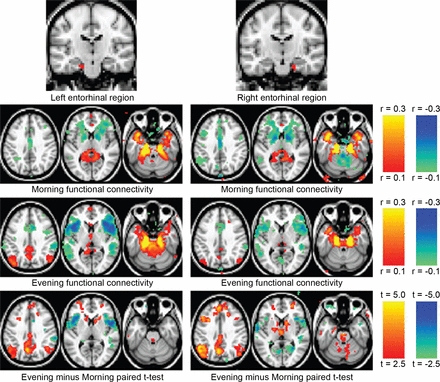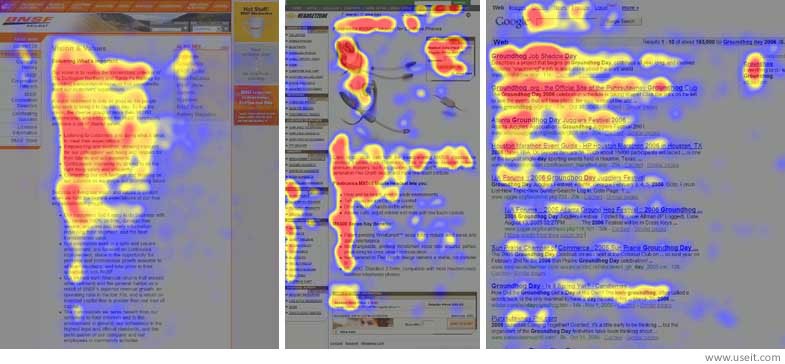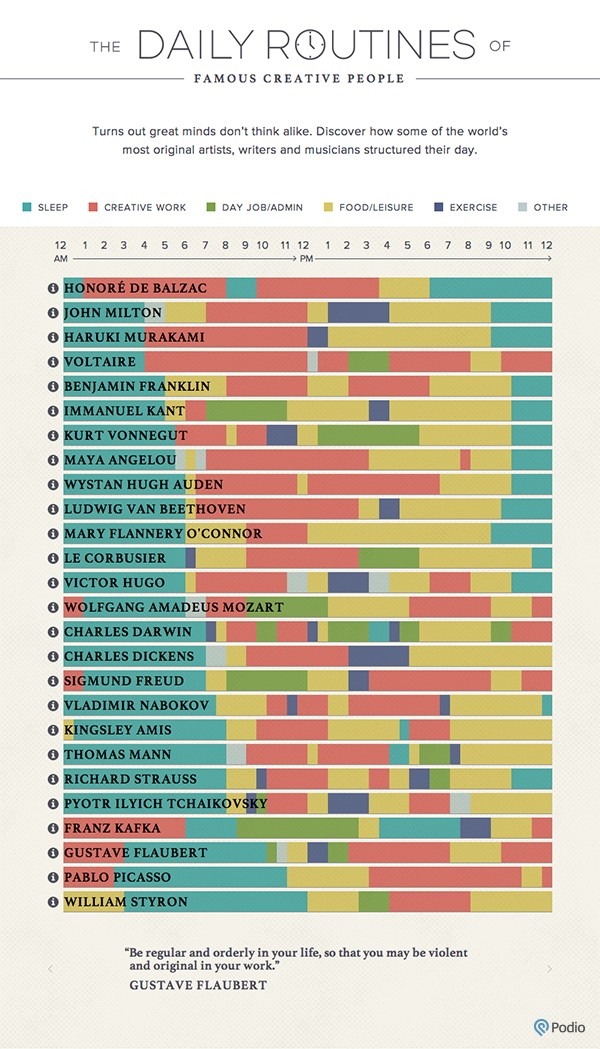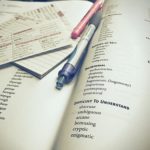What does science have to say about writing that is effective, engaging, and impactful? Read on to find out how you can become a better writer.
The internet is filled to the brim with writing advice, as dispensed by everyone from 17th-century poets to modern-day linguists. And real life is no different either — I bet even your co-worker in IT has his own little nugget of wisdom to share on the subject. Don’t dangle your modifiers. Always write in active voice. Don’t split infinitives.
How much of this advice is really effective, though?
Is it possible to write with a grammar rulebook open in front of you? More importantly, would doing so necessarily make for better writing?
When it comes to correct English, there’s no one in charge; the lunatics are running the asylum. There is no tribunal. There’s no rules committee. That would just never work with language. There are hundreds of millions of English speakers and they are constantly adding new terms to the language. They’re constantly changing shades of meaning. — Steven Pinker
Remember, technically correct does not always translate to interesting or engaging for the reader; otherwise, we’d all be reading technical manuals instead of fiction bestsellers.
What does science have to say about writing that is effective, engaging, and impactful? We decided to look into it and here’s what we found.
1. Get Into the Habit of Reading More
“If you don’t have time to read, you don’t have the time (or the tools) to write. Simple as that.” — Stephen King
Turns out that not all casually handed advice is useless after all. It’s impossible to be a great writer in isolation because everybody needs an inspiration.
Don’t believe me? Just look up the Wikipedia page of your favorite author and you’ll see a list of writers from the preceding generation whose names are written under the section ‘influenced by’.
There is so much that one learns from reading other people’s writing that would not have been possible to learn otherwise:
- It teaches sentence structure and formation
- It helps you gain new knowledge
- It provides a boost to your vocabulary
- It betters your understanding of the language
- It introduces you to new ways of written expression
Multiple studies have shown the effectiveness of reading in both children and adults: The more you read at school, the better your vocabulary and cognitive skills become. Reading also has a positive influence on your brain by increasing blood flow, thereby improving the brain’s functioning and connectivity. It even decreases your chances of developing Alzheimer’s disease.
So if you ever wanted a reason to read more, now you’ve got them.
The best advice I ever received about reading came from a senior creative person in the industry who told me: Don’t just read books. Read newspapers. Read magazines. Read product packaging labels. Read classifieds. Read warning signs. Read letters. Read essays. Read scripts. Read advertisement copy. Read billboards. In short, read anything and everything, including but not limited to what’s in front of you.
2. Write Early, Edit Late
Almost all successful creative people in the world adhere, and in the case of those not alive anymore, adhered, to more or less fixed daily routines. Their individual routines may vary, but they all stuck by their own routines with noted consistency.
Podio has cleverly organized this data from Mason Currey’s book Daily Rituals and presented it in a visual form on their website.
Want to develop a better work routine? Discover how some of the world’s greatest minds organized their days.
Click image to see the interactive version (via Podio).
Notice how in a majority of the cases, the creative work, i.e. writing, is followed by a period of sleep. New research may have shed some light on why this is probably not just a coincidence, but an effective strategy that creative people employ to make the most of their waking hours.
A study published in the Journal of Neurophysiology suggests that the prefrontal cortex, which is the part of our brains associated with creativity and new insights, may be more active immediately after waking up than any other part of the day.
As the day goes on, the level of activity in the prefrontal cortex gradually falls and the baton is passed to the analytical part of the brain, which is more apt to doing tasks that do not require a high level of creative function — such as research or editing.

However, enhanced creativity is part of the reason why it may be a good idea to write early in the morning right after waking up.
Another reason to do this is because willpower is a finite resource that gets depleted as the day goes on. So working early in the day while you have a lot of it will help you power through days when you’re just not feeling it.
3. Understand Your Readers’ Brain
No matter how skilled a shooter you are, if you don’t know what you’re aiming at, you’ll miss all of your shots. This is plainly obvious.
Well, the same thing applies to all other forms of writing too (including novel writing, blogging, social media writing).
Your primary job as a writer is to communicate clearly to your reader and make sure that your message is fully understood, everything else is secondary. And it would be very difficult to achieve this without a fair understanding of how a reader’s brain functions.
So, how do people read? Is there a difference between how they read offline and online? On what factors does the ease of readability depend on?
» How People Read
We assume that people read in a smooth motion when in reality our eyes move in quick, sharp jumps with small periods of stillness in between.
These movements are called saccades.
During these saccades, i.e., the time between one movement to the next, we can’t see anything — we’re essentially blind for short bursts of time.

Between saccades, our eyes also often jump back to read words that we may not have fully understood the first time around, these movements are called fixations.
In addition, we also use our peripheral vision to read ahead about 15 letters at a time to predict the next words before we’ve actually consciously assimilated them.
» How Information is Consumed Online
Since we’re so used to consuming content online, our brain has adapted to reading information is a very specialized manner. This is called the F-shaped pattern and was first discovered in an eye tracking study conducted by the Nielsen Norman Group.
Users first read in a horizontal movement, usually across the upper part of the content area. This initial element forms the F’s top bar.
Next, users move down the page a bit and then read across in a second horizontal movement that typically covers a shorter area than the previous movement. This additional element forms the F’s lower bar.
Finally, users scan the content’s left side in a vertical movement. Sometimes this is a fairly slow and systematic scan that appears as a solid stripe on an eyetracking heatmap. Other times users move faster, creating a spottier heatmap. This last element forms the F’s stem.

It’s good to be aware of this pattern so that you can place the most important content in the appropriate zones where the reader is more likely to read it than just skim over it.
» The Ease of Readability
First up, reading and comprehension are two entirely different concepts. What may be an easy read for a marine biologist may read like gibberish to a layman.
Beyond that basic distinction, generally speaking, the factors that affect readability are the choice of words, sentence construction, and paragraph structure.
You can easily calculate the ease of reading of your writing by running it through an online Flesch-Kincaid readability calculator. It’s a standard tool that grades writing on a score of 0 to 100, where a higher score indicates easier readability.
4. Be Visual and Conversational
One-third of the human brain is dedicated to assimilating and processing vision. So attempting to paint a picture with your words may go a long way in making you a more effective writer.
Here’s what Steven Pinker, a cognitive scientist, and linguist at Harvard, has to say on the subject:
We are primates, with a third of our brains dedicated to vision, and large swaths devoted to touch, hearing, motion, and space. For us to go from “I think I understand ” to “I understand ,” we need to see the sights and feel the motions. Many experiments have shown that readers understand and remember material far better when it is expressed in concrete language that allows them to form visual images…
Steven also suggests that in order to be more effective communicators, we should keep our writing simple rather than deliberately contriving it an attempt to seem smart.
Such a move almost always backfires and makes you look stupid instead.
…a majority of undergraduates admit to deliberately increasing the complexity of their vocabulary so as to give the impression of intelligence. This paper explores the extent to which this strategy is effective. Experiments 1–3 manipulate complexity of texts and find a negative relationship between complexity and judged intelligence.
As a writer, you should strive to be an equal to your reader. If you come from a place of superiority, it will be readily apparent, and you won’t be getting any points for it.
5. Use More Verbs and Fewer Nouns
Social media scientist Dan Zarella analyzed 200,000 tweets containing links and found that those that contained more verbs and adverbs had a higher clickthrough rate than those that had nouns and adjectives.

You may say that there’s much more to writing than just composing 140 character tweets. And I agree with you. However, there’s evidence that having more verbs in your writing has benefits beyond just writing tweets.

Shubham is a digital marketer with rich experience working in the advertisement technology industry. He has vast experience in the programmatic industry, driving business strategy and scaling functions including but not limited to growth and marketing, Operations, process optimization, and Sales.








